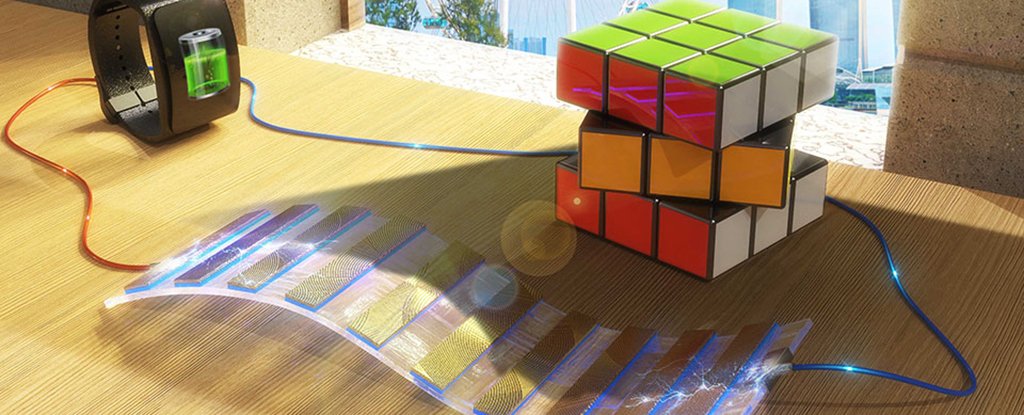Products You May Like
It sounds like something from a sci-fi movie, but the newly revealed Shadow-Effect Energy Generator (SEG) is a real prototype device. The fascinating concept could help us to transform the way renewable energy is generated indoors.
The SEG uses the contrast between darkness and light to produce electricity. It’s made up of a series of thin strips of gold film on a silicon wafer, placed on top of a flexible plastic base.
Whereas shadows are usually a problem for renewable solar energy production, here they’re actually harnessed to keep on generating power. The technology – which is cheaper to produce than a typical solar cell, according to its developers – produces small amounts of power and could be used in mobile gadgets, for example.
“Shadows are omnipresent, and we often take them for granted,” says materials scientist Tan Swee Ching, from the National University of Singapore (NUS). “In conventional photovoltaic or optoelectronic applications where a steady source of light is used to power devices, the presence of shadows is undesirable, since it degrades the performance of devices.
“In this work, we capitalised on the illumination contrast caused by shadows as an indirect source of power. The contrast in illumination induces a voltage difference between the shadow and illuminated sections, resulting in an electric current. This novel concept of harvesting energy in the presence of shadows is unprecedented.”
It’s that contrast between shadow and light that really makes the SEG device effective: under shifting shadows, the Shadow-Effect Energy Generator is twice as effective as conventional solar cells under the same conditions, the team discovered.
When the SEG is completely in shadow, or fully in the light (when the voltages across the strips are all similar), it produces a very low amount of electricity, or nothing at all.
With passing shadows – caused by clouds or waving tree branches perhaps, or simply the movement of the Sun – the device is able to generate enough power (1.2 V) to run a digital watch, the team demonstrated. That could well be boosted in the future, too.
“We also found that the optimum surface area for electricity generation is when half of the SEG cell is illuminated and the other half in shadow, as this gives enough area for charge generation and collection respectively,” says physicist Andrew Wee, from NUS.
The SEG also doubles up as a sensor: it can log shadows passing over it to record the movement of objects passing by. That could have various applications in connected smart home devices, for example, and could even be used to create self-powered sensors.
There’s plenty of work still to do, though – the researchers now want to try and bring down the cost of their SEG, perhaps by replacing the gold film with a different material. It could also be adapted for wearable use further down the line.
In the future, the more ways we have of producing renewable electricity, the more imaginative we can get with our gadgets, and the less we need to rely on fossil fuel for energy production. Shadows can now be added to the list of alternative energy sources, alongside snowfall and the cold of outer space.
“With its cost-efficiency, simplicity and stability, our SEG offers a promising architecture to generate green energy from ambient conditions to power electronics, and as a part of a smart sensor systems, especially in buildings,” write the researchers in their published paper.
The research has been published in Energy & Environmental Science.
